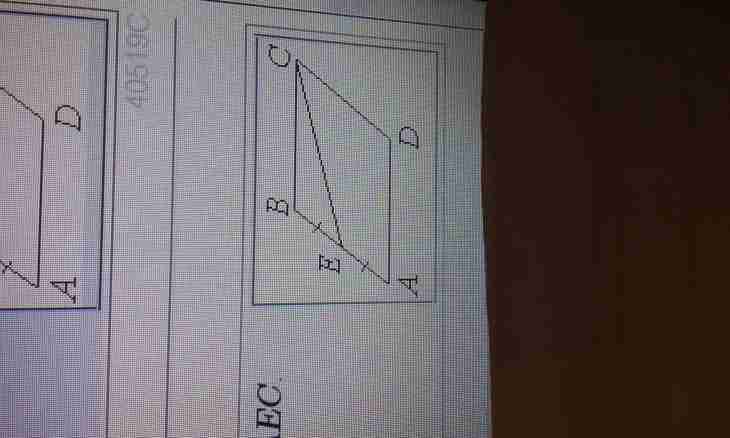It is required to find the area of a rectangular triangle in some tasks in geometry if lengths of its parties are known. As lengths of the parties of a rectangular triangle are connected by Pythagorean theorem, and its square is equal to a half of the work of lengths of legs, for the solution of this task it is enough to know lengths of two of its any parties. If it is necessary to solve the return problem – to find the parties of a rectangular triangle on its area, then additional information will be required.
It is required to you
- calculator or computer
Instruction
1. To find the parties of an isosceles rectangular triangle on its area, use the following formulas: To = √ (2*pl) or To = √2 * √ Pl of ides = 2 * √ Pl, gdepl – the area of a triangle, To – triangle leg length, D – length of its hypotenuse. Lengths of the parties will be expressed at the same time in the linear units of measure corresponding to the area. So, for example, if the area is set in square centimeters (cm²), then lengths of the parties will be measured in centimeters (cm). Justification of formulas. Area of an isosceles rectangular triangle: Pl = ½ * To², means To² = 2 * Teorema Pifagora Square for an isosceles rectangular triangle: D²=2 * To², K. Pust means D = √2 *, for example, the area of an isosceles rectangular triangle equals 25 cm². In this case, length of its legs will equal: To = √2 * √25 = 5√2, and hypotenuse length: Д = 2 * √25 = 10.
2. To find length of the parties of a rectangular triangle on its area generally, specify value any of additional parameters. It can be a ratio of legs or a ratio of a leg and a hypotenuse, one of acute angles of a triangle, length of one of the parties or its perimeter. For calculation of lengths of the parties of a triangle in each case use Pythagorean theorem (D² = K1² + K2²) and the following equality: Pl = ½ * K1 * K2, gdek1 and K2 – lengths of legs. From here follows that: K1 = 2pl/K2 and, on the contrary, K2 = 2pl/K1.
3. So, for example, if the ratio of legs of a rectangular triangle (K1/K2) is equal Skk, then K1 = Skk * to K2 = Skk * 2pl/K1, so K1 = √ (2 * Skk * Pl) K2 = √ (2 * Skk * Pl) / SkkD = √ ((2 * Skk * Pl) + ((2 * Skk * Pl) / Skk)) Let the area of a rectangular triangle – 25 cm², and the ratio of its legs (K1/K2) is equal 2, then on the above-stated formula it turns out: K1 = √ (2*2*25) = 10, K2 = 10/2 = 5, D = √ (10²+5²) = √125
4. Lengths of the parties and in other cases are similarly calculated. Let, for example, are known (Pl) Square and perimeter (Pe) of a rectangular triangle. As Pe = K1 + K2 + D, and D² = K1² + K2², turns out a system from three equations: K1 + K2 + D = PeK1² + K2² = D²К1 * K2 = 2pl at which solution in each case lengths of the parties of a triangle are defined. Let, for example, the area of a rectangular triangle 6, and perimeter – 12 (the corresponding units). In this case the following system turns out: K1+K2+D = 12K1² + To² = D²К1 * K2 = 12, having solved which, can be learned that lengths of the parties of a triangle are equal to 3, 4, 5.
